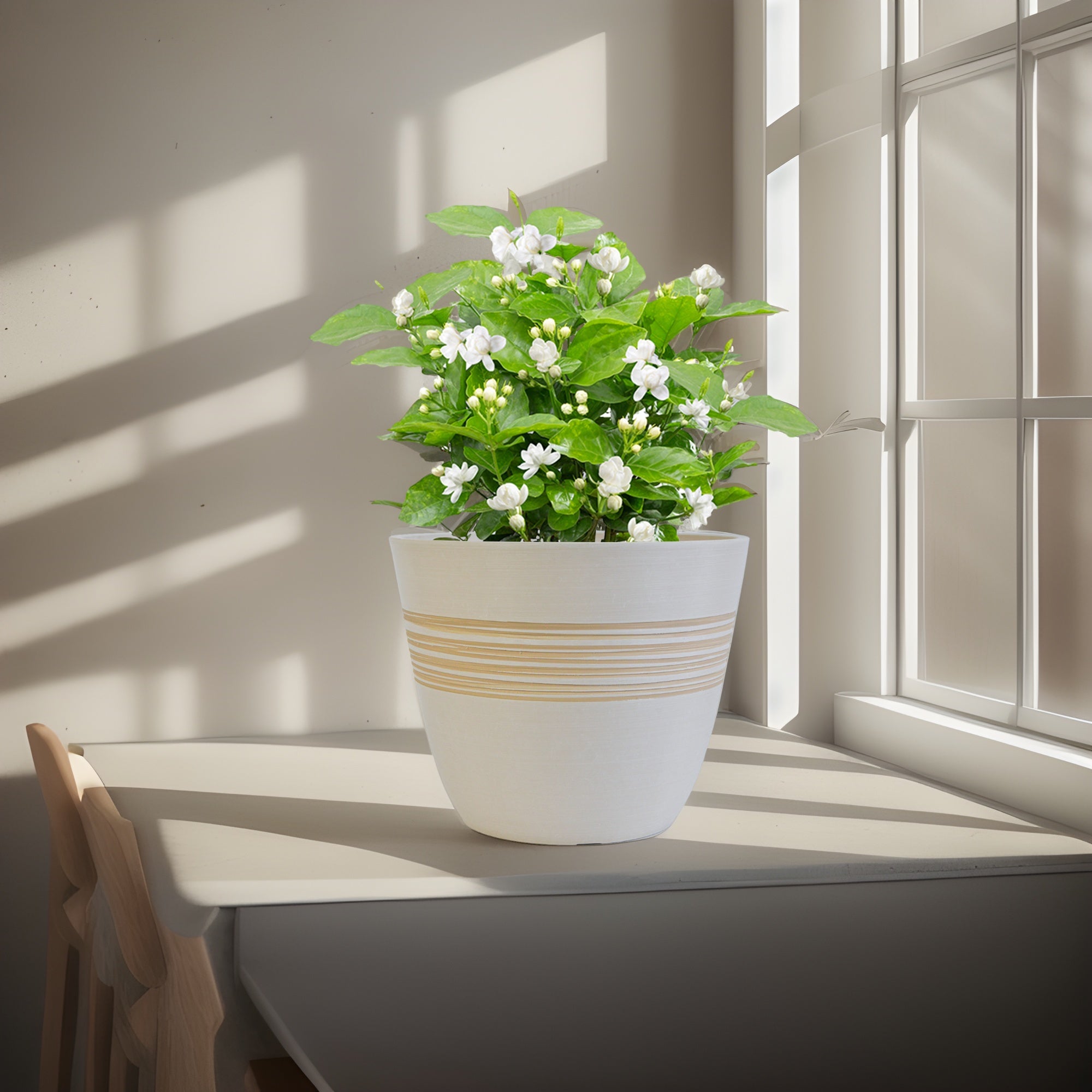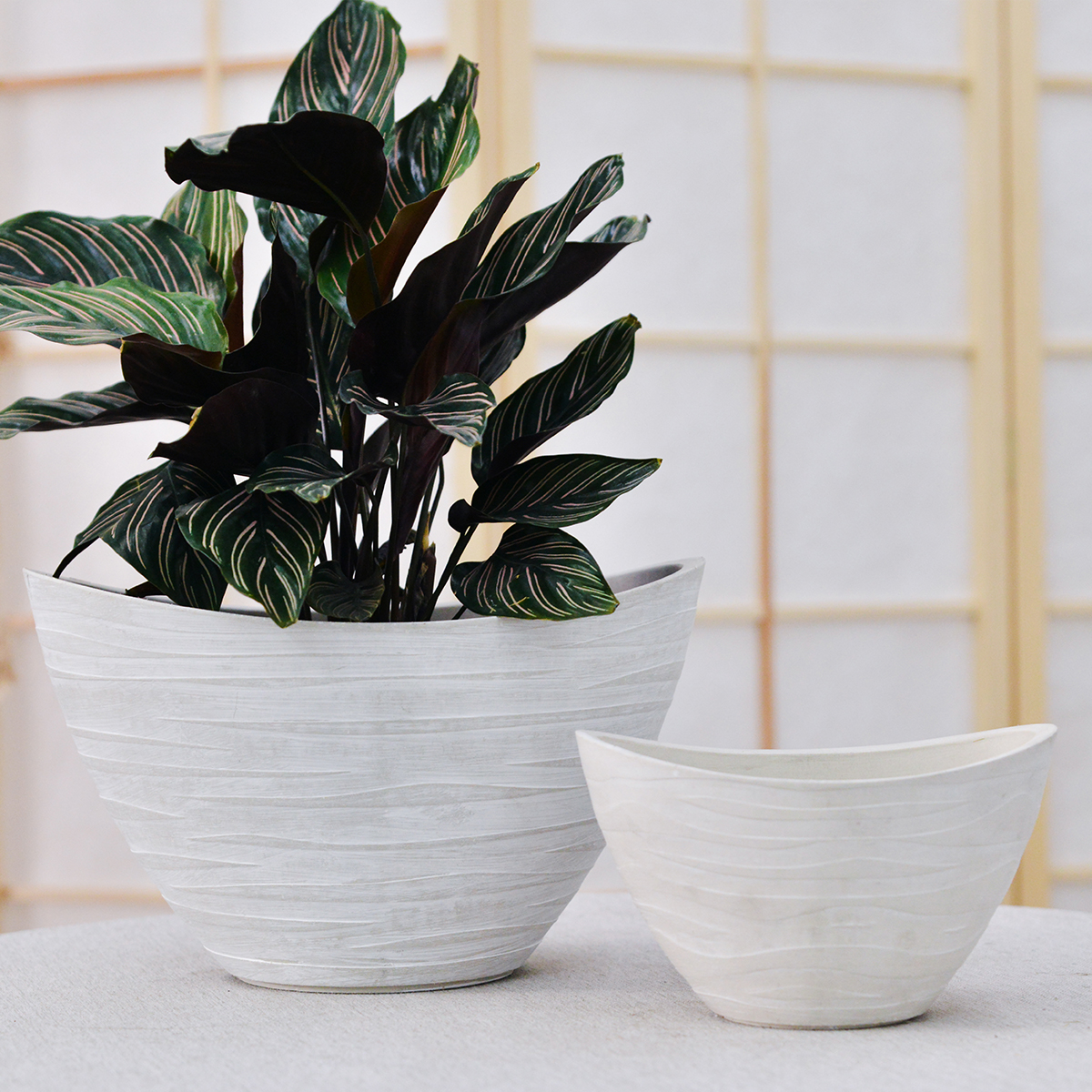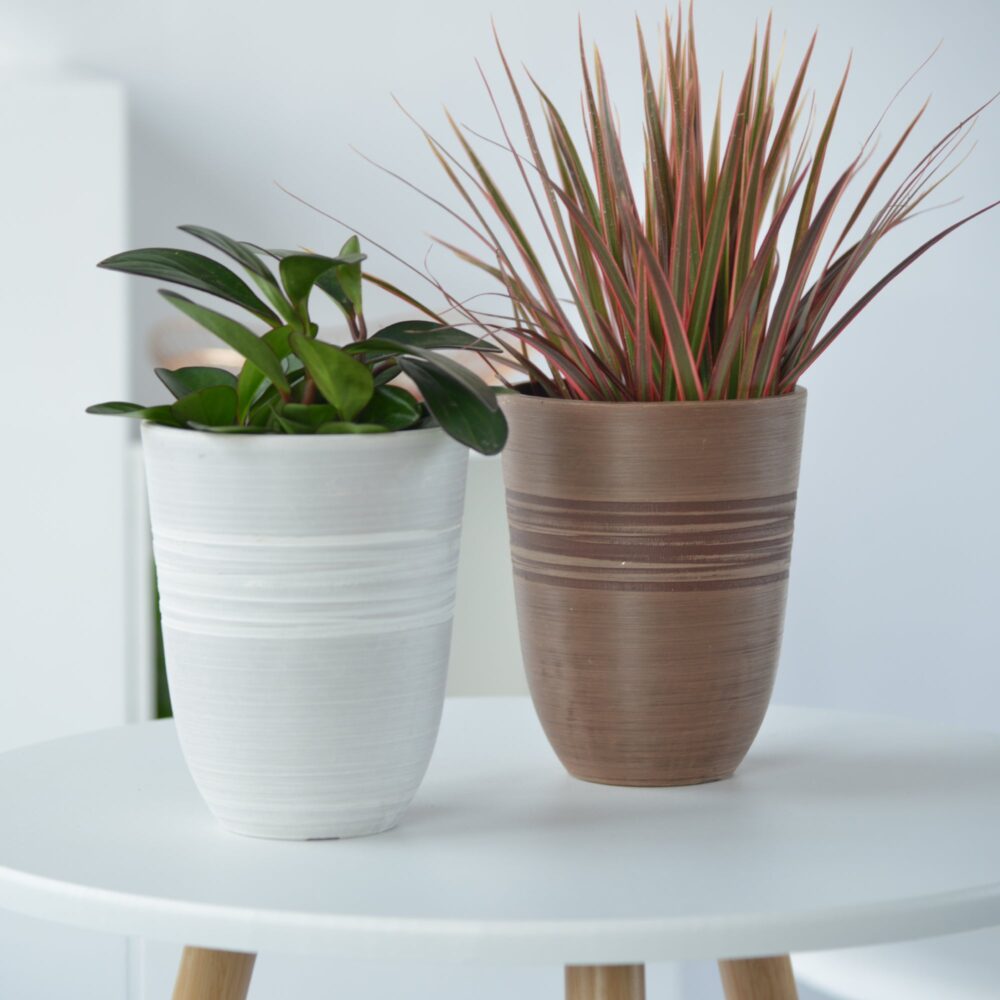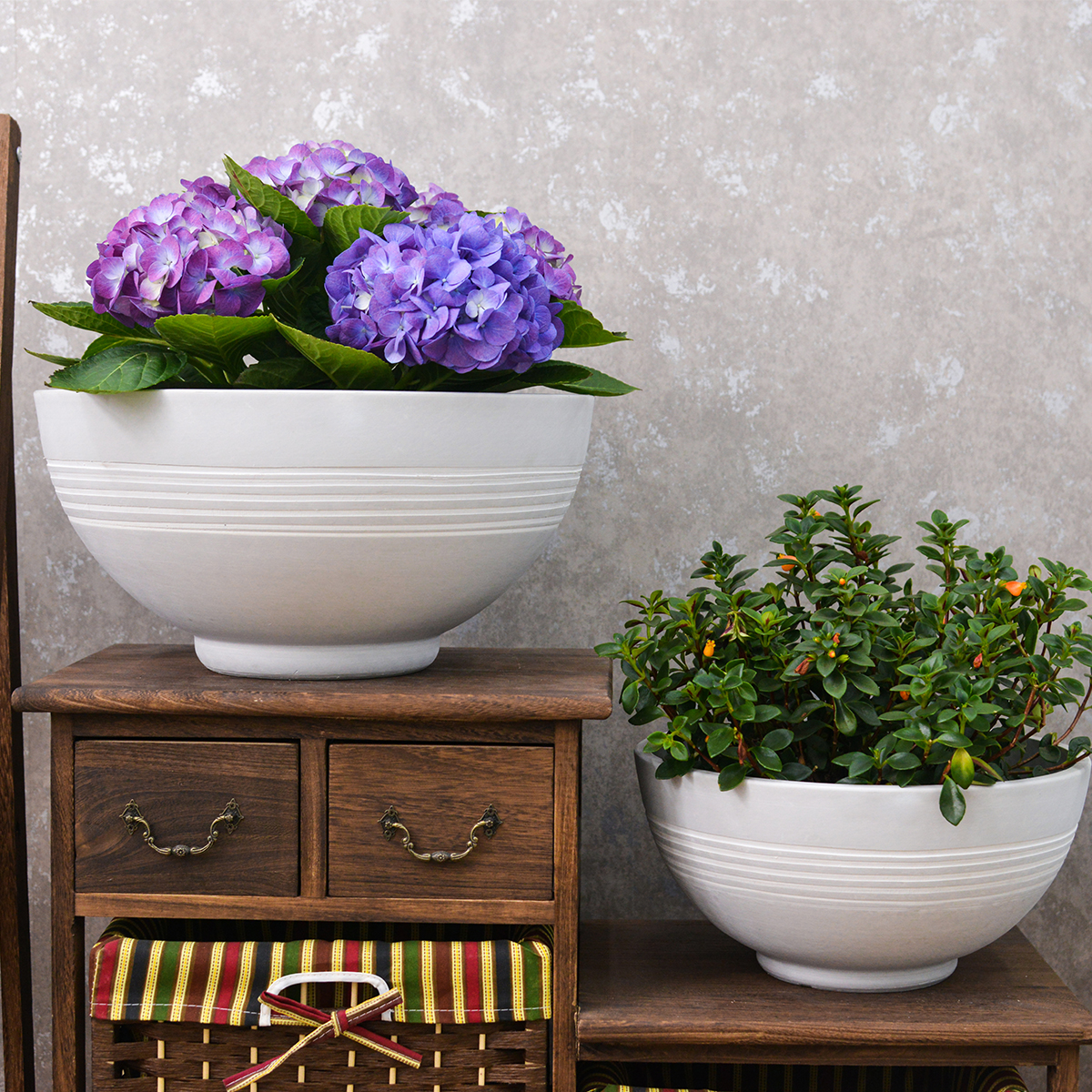Exploring Diverse American Garden Styles: From Zen to Classic
American homeowners embrace a wide array of garden design styles to create their perfect outdoor havens. From tranquil retreats to vibrant social spaces, these gardens reflect diverse tastes and inspirations. Here, we explore five popular garden design styles that are particularly beloved in the United States, highlighting their key features and the role that flower pots and plants play in bringing them to life.
1. The Serenity of the Japanese Garden
Japanese gardens are all about creating a peaceful and contemplative atmosphere. They draw inspiration from nature, often aiming for an idealized and refined representation. While the overall structure might appear simpler compared to other garden styles, the beauty lies in its understated elegance and meticulous attention to detail. Combining natural elements like water, stone, sand, and carefully selected plants, Japanese gardens offer a tranquil escape.
Deeply influenced by Chinese Zen Buddhism and a reverence for nature, the elements within a Japanese garden – from individual plants to carefully placed rocks – often carry symbolic meaning, offering visual delight and encouraging introspection. While traditional Chinese gardens can be expansive, Japanese gardens often present a miniaturized version, incorporating ponds, streams, hills, stones, trees, flowers, and bridges within a smaller footprint. The selection of plants emphasizes graceful forms and subtle colors, with plants and rock arrangements complementing each other. Essential elements of a Japanese garden often include gravel, weathered wood, and moss.

The Role of Flower Pots and Plants: While Japanese gardens prioritize natural ground cover and carefully pruned trees and shrubs, flower pots can be used sparingly to add pops of seasonal color or to showcase particularly prized specimens like bonsai or meticulously trained azaleas. The focus remains on the overall harmony and natural flow, so container use is often minimal and understated, with simple, natural materials like unglazed terracotta or stone being preferred.
2. The Romantic Allure of the English Garden
English gardens are characterized by their seamless integration with the surrounding natural environment, aiming to create a space that feels like an extension of the wild. Whether it’s rolling terrain, winding paths, or picturesque water features, English gardens exude a strong sense of naturalness. They emphasize the creation of natural-looking thickets and lawns, celebrating the beauty of flowers in terms of their shape, color, and fragrance. This style embraces both harmonious color combinations and the intermingling of various plants to create layered and visually rich scenes, while also valuing freedom and imagination, resulting in gardens with boundless charm. The idyllic atmosphere of an English garden reflects a deep appreciation, understanding, and respect for nature.
With plants taking center stage, English gardens are natural, elegant, and subtly sophisticated – a quintessential representation of humans and nature coexisting harmoniously. Garden elements like arbors, benches, and trellises are designed with nature in mind, blending seamlessly into the landscape. Stepping into an English garden offers a sense of natural healing for the soul. In this elegant and romantic setting, one can’t help but feel the comforting and welcoming embrace of nature. Essential elements often include pergolas and seating areas.
The Role of Flower Pots and Plants: English gardens thrive on an abundance of plants, and flower pots play a vital role in adding to this lushness. Terracotta pots overflowing with colorful annuals and perennials are a common sight. Climbing roses trained up trellises in large containers can create dramatic vertical accents. Window boxes brimming with flowers further enhance the cottage-like charm often associated with English gardens. The emphasis is on creating a profusion of blooms and foliage, with containers contributing to the overall feeling of abundance and natural beauty.
3. The Classic Elegance of the French Garden
The French garden style, often associated with grandeur and formality, seeks a sense of order and control over nature. While still embracing greenery and flowers, French gardens are known for their symmetrical layouts, meticulously manicured hedges, and precisely defined parterres (ornamental planting beds). This style exudes romance, elegance, and a sense of classical sophistication. French gardens aim for a natural feel without appearing overly wild or unkempt, showcasing a unique personality that avoids monotony. Stone is a prominent material, used extensively for pathways, edging, patios, and decorative elements. The color palette often emphasizes greens, blues, and purples, with neatly trimmed boxwood hedges, intricate planting schemes, and fields of lavender being characteristic features. Essential elements include statues, fountains, ponds, and terraces.
The Role of Flower Pots and Plants: While the structure of a French garden relies heavily on formal planting beds and precisely shaped shrubs, flower pots can introduce a touch of informality and additional color. Ornate urns filled with vibrant flowers can be placed strategically along pathways or near seating areas to soften the rigid lines. Topiary in containers is also a common feature, further emphasizing the controlled yet artistic nature of the French garden style. The choice of plants often includes classic blooms like roses, geraniums, and lavender, maintaining the elegant and refined aesthetic.
4. The Relaxed Charm of the American Garden
American gardens often convey a sense of neatness and spaciousness, allowing one to experience warmth and comfort within a natural setting. Compared to the densely planted and layered look of English gardens, American gardens tend to feature plants arranged in a more orderly and streamlined manner. The overall atmosphere is one of casual formality, incorporating well-maintained shrubs and lawns, straight pathways, and ample greenery.
Rooted in a spirit of practicality, nature, and simplicity, American garden design embraces a free and lively understanding of the natural world. Landscapes often incorporate mature trees, streams (where possible), lawns, shrubs, and a variety of flowers. The goal is to create a comfortable outdoor space where one can truly relax and rejuvenate amidst the refreshing scents and tranquil surroundings. Essential elements often include well-maintained lawns, a mix of shrubs and flowers.
The Role of Flower Pots and Plants: American gardens readily embrace the versatility of flower pots and planters. They are used to add pops of color to patios and porches, create welcoming entrances, and define outdoor living areas. A wide variety of plants are used in containers, reflecting the diverse climates across the United States. From sun-loving succulents in the Southwest to vibrant impatiens in the Northeast, container gardening allows American homeowners to personalize their outdoor spaces and express their individual gardening styles. Window boxes and hanging baskets are also popular additions, further enhancing the charm and vibrancy of American gardens.
5. The Harmony of the Chinese Garden
The Chinese garden represents a unique spiritual and cultural expression, embodying elegance, composure, and a profound connection to nature. Chinese garden design organically integrates architecture, water features, and plants, with pavilions and winding corridors serving as complementary elements. The creation of a landscape imbued with the spirit of mountains and water is paramount. The core principles of Chinese garden construction involve the artful arrangement of water and plants, the creation of artificial hills, and the placement of stones. The six essential elements of a traditional Chinese garden are gates, paths, plants, ponds, pavilions, and artificial mountains. Essential elements often include bamboo, artificial hills, and flowing water.
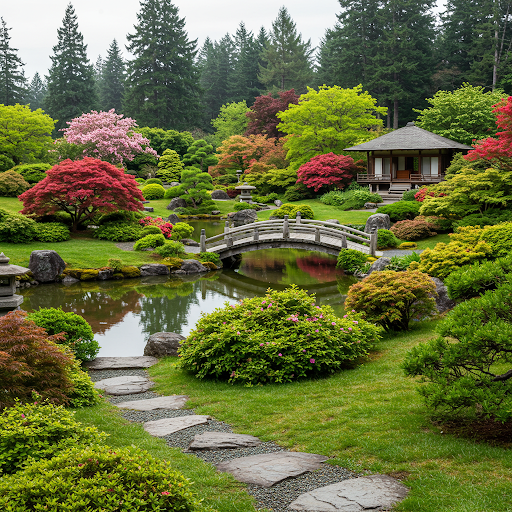
The Role of Flower Pots and Plants: While Chinese gardens emphasize naturalistic planting and the symbolic placement of specific trees and shrubs like bamboo and pines, flower pots can be used to introduce seasonal color and highlight particular plant varieties. Traditional Chinese ceramic pots, often intricately decorated, can add an authentic touch. The use of penjing (the Chinese art of miniature landscapes in containers, similar to bonsai) is a significant aspect of Chinese garden culture, showcasing meticulously pruned trees and plants in artistic arrangements. The focus remains on creating a harmonious balance between natural elements and human artistry, with flower pots serving as a way to further enhance this balance.
By exploring these diverse American garden styles and considering how flower pots and plants can be incorporated, you can find the perfect inspiration to transform your own backyard into a beautiful and functional outdoor retreat.
Planter for Indoor Outdoor Plants, Set of 2 Modern Decorative Plant Pots with Drainage Hole, Decorative Flower Pots
By greenship-seo|2025-04-10T07:46:01+00:00January 9, 2025|Categories: Hand-carving Series|Tags: Decorative Flower Pots, Self-Watering Pots|
20YB
By greenship|2024-08-16T05:37:57+00:00August 16, 2024|Categories: Hand-carving Series|
Plant Pots 6 inch 8 inch 10 inch for Indoor Plants, Set of 3 Modern Decorative Planter ts with Drainage Hole, Decorative Flower Pots
By greenship-seo|2025-04-10T06:39:28+00:00January 14, 2025|Categories: Hand-carving Series|Tags: Decorative Flower Pots|
Planter 6 in W / 8 in W / 12 in W Indoor or Outdoor Plants, Modern Decorative Plant Pots with Drainage Hole, Decorative Flower Pots
By greenship-seo|2025-02-06T13:43:53+00:00January 16, 2025|Categories: Hand-carving Series|Tags: Decorative Flower Pots|
KC3-14A
By greenship|2024-08-16T06:26:30+00:00August 16, 2024|Categories: Hand-carving Series|
KC3-09k
By greenship|2024-08-16T06:24:36+00:00August 16, 2024|Categories: Hand-carving Series|

